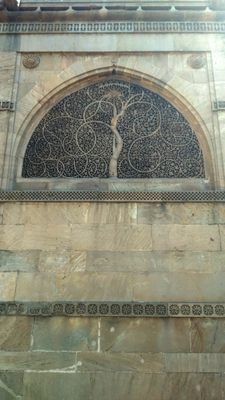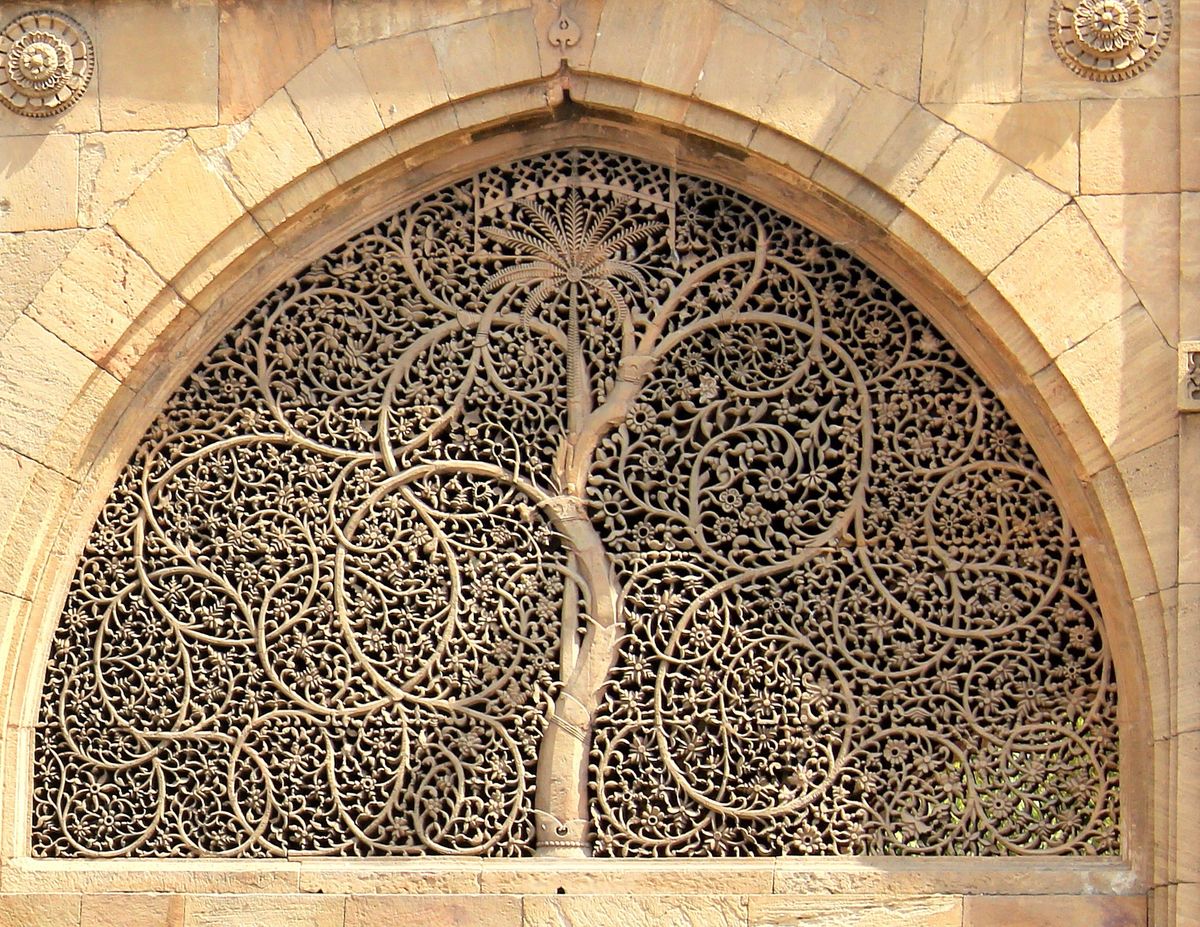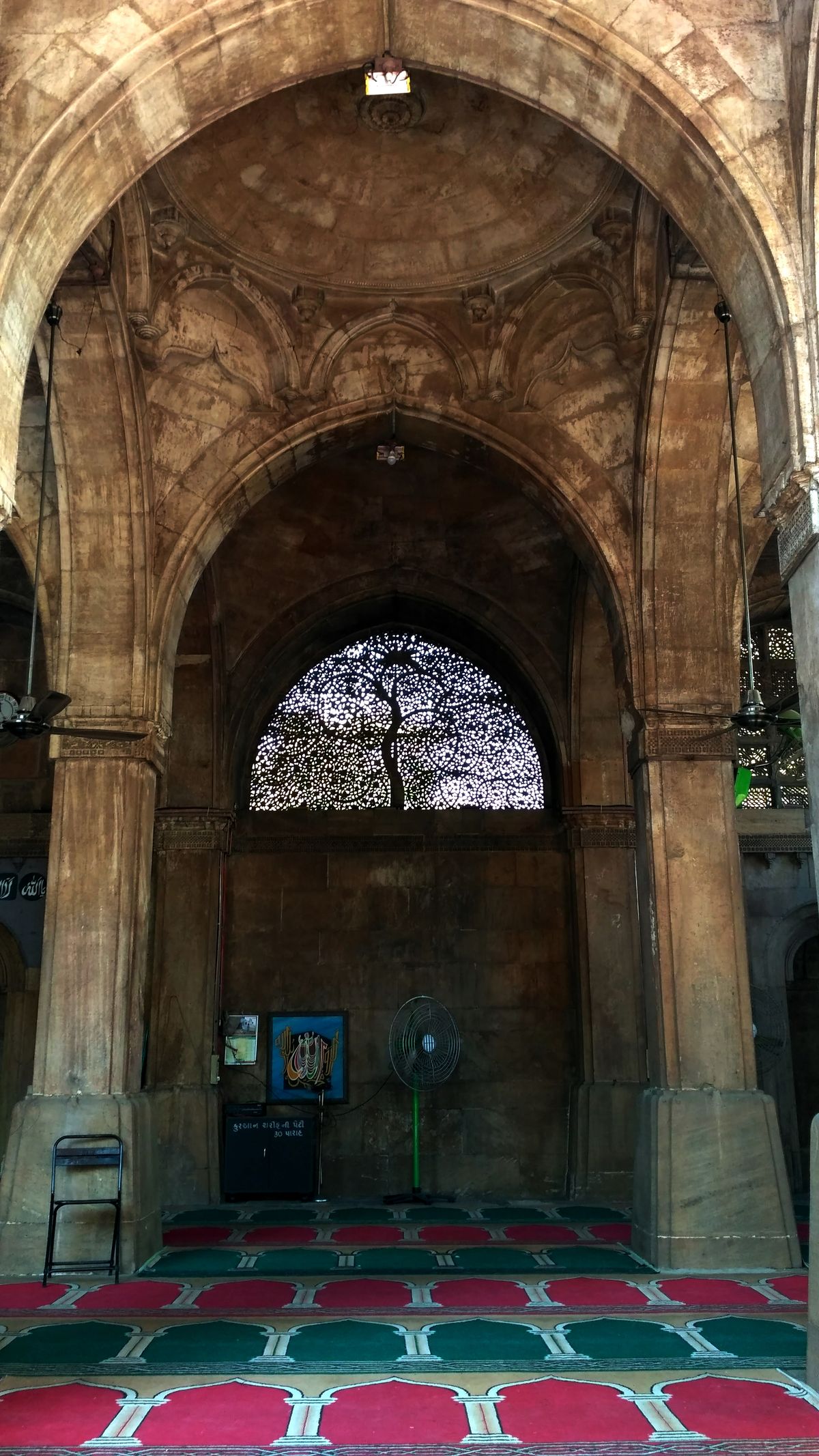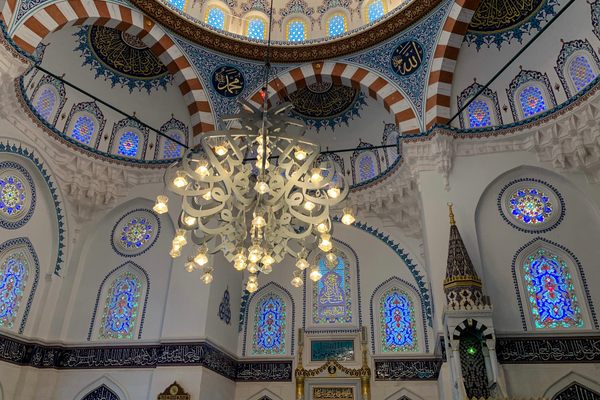About
The Sidi Saiyyed Mosque in Ahmedabad, Gujarat, is a sublime ode in stone to the extraordinary architectural legacy of the African diaspora in India. Although their forefathers were originally brought to India as slaves and maritime laborers, the descendants of these Africans rose to positions of power as military commanders in the armies of the sultans and became great patrons of art and architecture.
Called Sidis (or Siddis), an appellation of Africans, or Habshis, from the Arabic-Persian word for "people from Abyssinia or Ethiopia," one of them was Shaykh Sayyid al-Habshi Sultani, or Sidi Saiyyed, who constructed his eponymous mosque. Built in 1573, the last year of the Gujarat Sultanate before the Mughals invaded, the mosque is one of the finest specimens of the prodigious architectural accomplishments of the Sidis in India.
Situated in the heart of the 600-year-old walled city of Ahmedabad, the design of the mosque is entirely in the arcuate system of construction, involving arches, domes, squinches, and vaults. The mosque is set up like a theatre without a fourth wall, celebrated for the intricately carved filigree work on its jalis (screen windows). The 20th-century Indologist and art historian Vincent Arthur Smith described these jalis as the "most artistic stone lattice-work to be found anywhere in the world."
The ornamental latticework adorns the 10 nearly semicircular windows of the mosque, with some displaying complex geometrical designs and others carved in the manner of intertwined trees and foliage. The most impressive of them all is the Sidi Saiyyed Jali, located to the right of the central walled arch. Sixteen feet in size, the carvings on this jali represent the Tree of Life motif, which is an artistic representation of a tree believed to grow in paradise according to Islamic mythology. This finely wrought motif has become an unofficial symbol of Ahmedabad, India’s first UNESCO World Heritage city.
When men pray in the speckled light of the jalis, few, if any, remember the man who built the mosque or think about his remarkable history. Sidi Saiyyed, or "Sidi Saeed" as an inscription in the mosque refers to him, was a royal slave in the service of Sultan Mahmud III, the last ruler of the Gujarat Sultanate. Upon the sultan’s death, he joined the retinue of the Abyssinian general Bilal Jhajhar Khan. By the time he retired from service, Sidi Saiyyed had amassed a considerable fortune, which he used to build his beautiful mosque, as well as for acts of philanthropic charity, such as feeding the poor daily in his public kitchen.
The mosque stands as a gateway toward unearthing the little-known history of the African diaspora in India. Drawn from Eritrea, Ethiopia, Somalia, Lower Egypt, Sudan, Kenya, Tanzania, Malawi and Mozambique, the descendants of Africans in India have been integral in shaping its medieval history. Apart from serving in a military capacity, their contributions to art and architecture in India are numerous and spectacular. Though the numbers of the Sidi community in India is virtually insignificant in a country of 1.3 billion people, their past is vibrantly alive in the form of enduring architectural masterpieces such as the Sidi Saiyyed Mosque.
Related Tags
Know Before You Go
The mosque is open 24/7. It is located in the middle of a busy intersection and parking may be difficult.
Delhi and Rajasthan: Colors of India
Discover Colorful Rajasthan: From Delhi to Jaipur and Beyond.
Book NowPublished
June 3, 2019
Sources
- Purnima Mehta Bhatt, The African Diaspora in India: Assimilation, Change and Cultural Survivals, Taylor & Francis, 2017
- John Burton-Page, Indian Islamic Architecture: Forms and Typologies, Sites and Monuments
- Vincent Arthur Smith, Art of India, Parkstone International, 2015
- Helene Basu interview, ‘Historical roots and customs of the Sidi…’, https://www.indiantribalheritage.org/?p=11852
- Sylviane A. Diouf, ‘African Descendants in India’, https://www.lapiduscenter.org/1954-2/




































